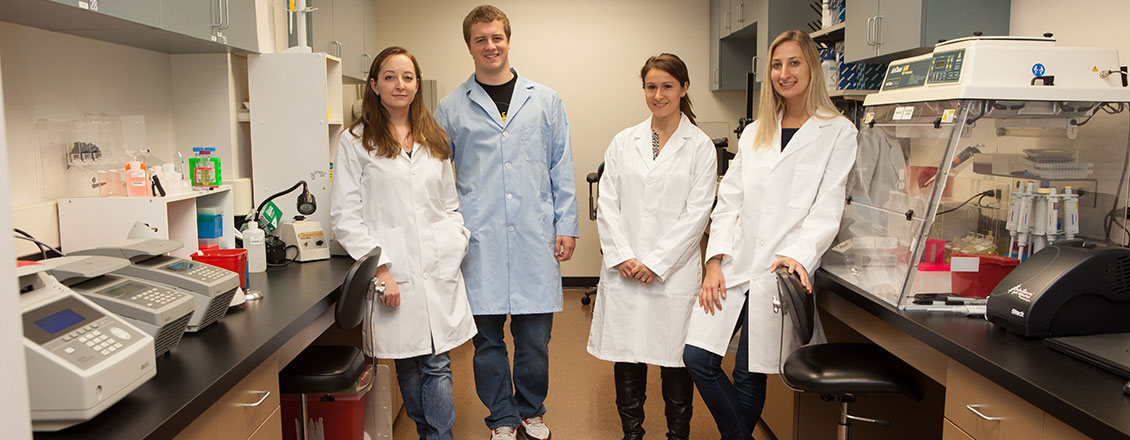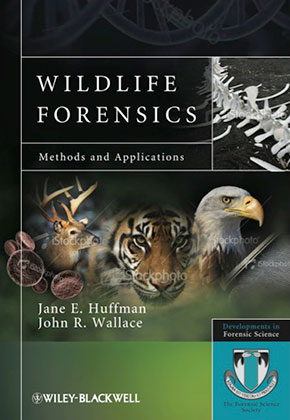
Wildlife Forensic Services
Standard Services
Our fundamental goal of the laboratory is to build and maintain a long term collection of wildlife DNA samples by archiving biological materials such as tissue, hair, blood, feathers, scales, bone, teeth and buccal swabs.
This provides analysis of the sample(s) when rush services are not required. Samples are processed FIFO and typical turn-around is four to five weeks. Special cases and difficult samples may take longer and additional charges may apply.
| Service | Description |
|---|---|
| Species Identification | To identify the species of the sample for samples that are unknown, cooked, mixed or partially degraded. |
| Parts/Identity Matching | To determine individual identity of the sample for matching of parts and/or contribution to mixtures. |
| Relatedness | To determine relationship of the sample for parentage, kinship and relatedness. |
| Gender Typing | To determine gender of the sample. |
| Blood Characterization | To determine the origin of the sample as being human or non–human. |
| Expert Testimony | Now available |
- Sample Types for Submission
-
The resultant analysis can be used as evidence in the pursuit of criminal prosecution for the case. Samples that are submitted can be any biomaterial:
- Tissue
- Skin
- Hair
- Blood
- Feather
- Talon
- Claw
- Horn
- Antler
- Saliva
- Bone
- Tooth
- Egg
- Semen
- Buccal swab
Wildlife Forensics: Methods and Applications
 The continued development and integration of wildlife forensic science as a field
will be critical for successful management of the many significant conservation issues
related to the illegal wildlife trade and wildlife law enforcement. The Northeast
Wildlife DNA Laboratory examines, identifies, and compares evidence using a range
of scientific procedures and instruments, to link suspect, victim, and crime scene
with physical evidence. A helpful textbook in wildlife forensics is: Wildlife Forensics:
Methods and Applications.
The continued development and integration of wildlife forensic science as a field
will be critical for successful management of the many significant conservation issues
related to the illegal wildlife trade and wildlife law enforcement. The Northeast
Wildlife DNA Laboratory examines, identifies, and compares evidence using a range
of scientific procedures and instruments, to link suspect, victim, and crime scene
with physical evidence. A helpful textbook in wildlife forensics is: Wildlife Forensics:
Methods and Applications.
The book provides an accessible and practical approach to the key areas involved in wildlife forensics. The book contains numerous global case studies throughout the text that take the reader from the field, to the lab analysis to the court room, giving a complete insight into the path of forensic evidence and demonstrating how current techniques can be applied to wildlife forensics. With numerous global examples of various types of wildlife crimes, this is a useful reference for the application of forensic techniques to the field of wildlife crime. It covers a number of different areas in forensics, entomology, hair identification, use of DNA for individualization and species identification. The book contains approaches that wildlife forensic investigators and laboratory technicians can employ in investigations and effectively illustrates various methods through case studies. It provides the direction and practical advice required by legal and wildlife conservation officers seeking to gain the evidence needed to prosecute wildlife crimes.
Contact Us
Contact Information
- Campus Address
- ESU Innovation Center
- Phone:
- (570) 422-7892
- Fax:
- (570) 422-3724 (Fax)
- Title of Department Leader
- Director
- Name
- Nicole Chinnici
- E:
- nchinnici@esu.edu
- Phone:
- (570) 422-7891



